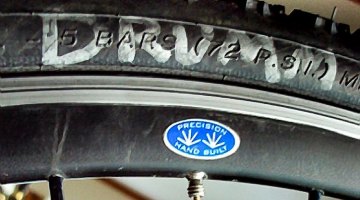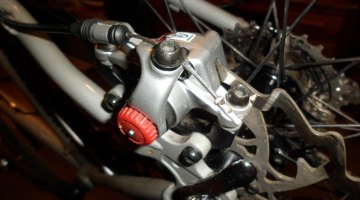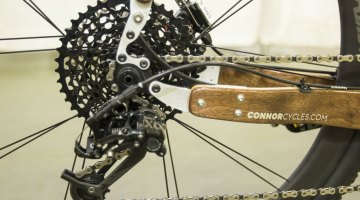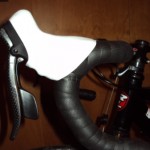
Hoods up–a good 'cross position © Dave Drumm
If you’re anything like us here at Cyclocross Magazine, you’re starting to dust off the cyclocross bike and get it into tip-top shape for fall. ’Cross bikes share many things with road bikes, but there are stark differences both in the machines and in a good rider’s position. This week’s Gut-Wrenching Mechanical Mondays feature takes a look at a hood – and hand – adjustment that will help you improve your bike handling.
This is the seventh installment in our series of from-the-crew-pits tips. Some will be straight-forward, others more involved, but they’ll all help you to keep your cyclocross bike humming smoothly along. Catch up on the last article about tagging your gear.
by Dave Drumm
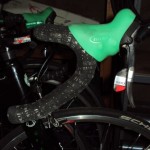
Typical road position © Dave Drumm
Cyclocross bikes are different than road bikes. They are designed for totally different types of terrain. A ‘cross bike has more clearance between the frame and the wheels to allow clearance for wider tires, mud and muck. It has cantilever brakes that provide adequate braking with plenty of room for the mud they will surely encounter. The head angle on Cyclocross bikes are often more slack, allowing for more precise steering and better handling at slower speeds, and the bottom bracket is often higher to allow for the clearing of obstacles and pedaling through corners. To truly take advantage of your bike’s handling abilities, proper setup is essential.
Many riders will set up their cross bikes to mimic the position of their road bikes. The one area of setup that I see this the most is in the cockpit. Cyclocross is raced in demanding, less-than-ideal conditions. One way of helping you gain better control is to position your brake hoods higher on your handlebars.
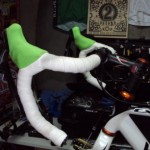
Dave Drumm's hood position of choice, even higher! © Dave Drumm
The majority of the time, cyclocross racers are on the hoods, not in the drops. By rotating your hoods back and further up on the bar, you’re creating a slightly more upright riding position. This allows for bike control in technical situations and will place a little more downward force on the rear wheel, aiding in traction. Another plus of rotating your hoods is that gives you a better chance of actually staying on your hoods when your gloves are covered in mud–you’re less likely to slide off of them in a section of chatter bumps when you are deep in the pain cave if they are angled more toward you. This is especially true for Campagnolo, SRAM and the new generation of Shimano hoods where the shift cables run under your bar tape. (The older style of Shimano STI hoods had the shifter cables coming out of the inboard side of the hood, which have been known to act as thumb safety catches when the going gets bumpy and slippery.)
Try a few different variations of angle to find what works best for you. I assure you this is one simple tip that will increase your bike’s handling and help keep you off the ground when your gloves get slippery. Worried about getting low and aero? Well, you’ve still got the drops for that!























